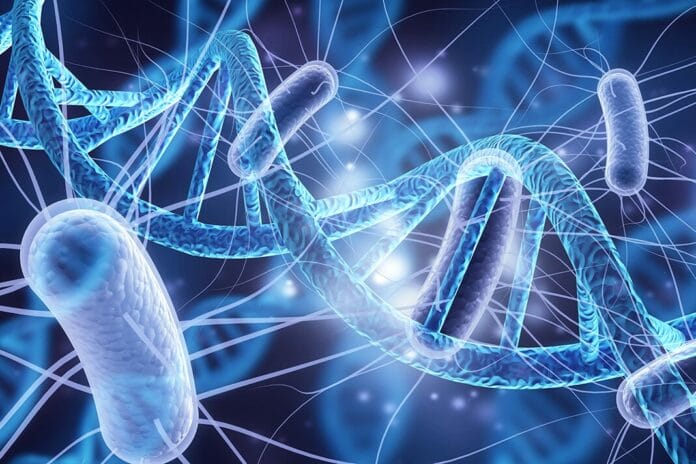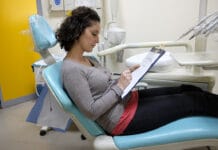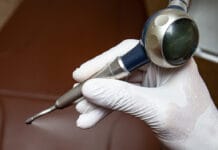The rise in antibiotic-resistant bacterial infections is a significant global concern, causing nearly five million deaths annually. Bacteria develop resistance to antibiotics through changes in their DNA, often acquiring antibiotic-resistant genes (ARG).1
Antibiotic stewardship is an important aspect of dental care as more and more bacteria become antibiotic-resistant. A study published in the journal Microbiome investigated the number of unknown and/or overlooked ARGs in human and animal-associated microbiomes.1
Bacterial communities in humans, animals, and the environment harbor a wide range of ARGs. Still, only a fraction of these, known as “established ARGs,” are well-studied and present in existing databases. The rest, referred to as “latent ARGs,” remain underexplored. Functional metagenomics has identified numerous latent ARGs in various bacterial communities, including the human microbiome. However, little is understood about the distribution of latent ARGs within and between environments.1
The Study
This study aimed to offer a more comprehensive understanding of ARGs. A diverse reference database containing both latent and established ARGs was created by combining existing repositories with computationally predicted resistance genes from numerous bacterial genomes.1
Researchers shifted their focus from identifying prevalent resistance genes in pathogenic bacteria to analyzing new forms of resistance genes in large quantities of bacterial DNA sequences. They traced these genes in thousands of different bacterial samples from various environments, including humans, soil, and sewage treatment plants. The study analyzed a staggering 630 billion DNA sequences in total.1
Metagenomics involves sequencing microbial samples and is commonly used to study bacterial communities and their resistance gene content. Existing studies have primarily focused on well-known ARGs listed in reference databases. As a result, the abundance and diversity of latent ARGs in bacterial communities have been underestimated.1
Comprehensive data encompassing both latent and established ARGs is crucial to comprehend how bacterial communities respond to antibiotic use. Understanding the prevalence and diversity of latent ARGs is vital for identifying environments where resistance genes could be mobilized and transferred to pathogens.1
Results
Analysis of over 10,000 metagenomic samples revealed that latent ARGs are widespread and diverse in various environments. While the pan-resistors (all ARGs in an environment) were dominated by latent ARGs, the core-resistors (commonly found genes) consisted of both latent and established ARGs. Some latent core-resistome ARGs were shared among environments and present in human pathogens.1
Genomic analysis indicated that many of these genes were associated with mobile genetic elements, suggesting their potential as emerging resistance determinants in pathogens. The study concludes that considering both latent and established ARGs is essential to fully characterize the resistome and understand how antibiotic selection impacts bacterial communities.1
Overall, the study involved extensive data retrieval, processing, and analysis to understand better the distribution and diversity of antibiotic resistance genes in various bacterial communities.1
The study’s findings found a relatively high abundance of antibiotic-resistant genes present in bacteria in almost all environments, including our microbiomes and pathogenic bacteria. This could lead to more infections that are difficult to treat. The researchers found that resistance genes in bacteria living on and in humans and the environment were ten times more abundant than previously known. Of the resistance genes found in bacteria in the human microbiome, 75% were not previously known at all.1
Conclusion
The research team is now integrating the new data into the international EMBARK project, which aims to monitor how antibiotic resistance spreads between humans and the environment. This will allow researchers to monitor these new resistance genes in the environment in the hope that we can detect them in pathogenic bacteria before they are able to cause outbreaks in health care settings.1
Understanding the prevalence and spread of antibiotic resistance can help dental professionals make informed decisions about treatment strategies and contribute to broader efforts to combat the global health concern of the rise in antibiotic-resistant bacterial infections.
Before you leave, check out the Today’s RDH self-study CE courses. All courses are peer-reviewed and non-sponsored to focus solely on high-quality education. Click here now.
Listen to the Today’s RDH Dental Hygiene Podcast Below:
Reference
- Inda-Díaz, J.S., Lund, D., Parras-Moltó, M., et al. Latent Antibiotic Resistance Genes Are Abundant, Diverse, and Mobile in Human, Animal, and Environmental Microbiomes. Microbiome. 2023; 11(1): 44. https://doi.org/10.1186/s40168-023-01479-0











